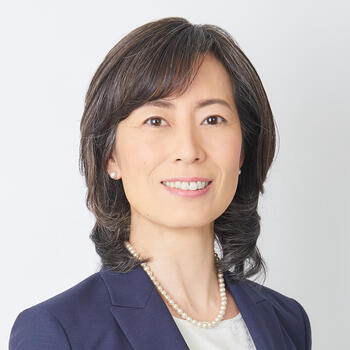This interview with APARC and Korea Program Director Gi-Wook Shin was originally published in Asia Experts Forum, a student-curated journal from the Keck Center for International and Strategic Studies at Claremont McKenna College. Ava Liao, a student journalist pursuing a dual major in International Relations and Media Studies, reported this story.
While Korean national identity was historically defined against Japanese imperialism, in more recent times Korean identity is responding to new influences related to globalization. How has Korean national identity been shaped by the distinctly Korean policy of segyehwa in the face of globalization?
Japanese colonialism was instrumental to the formation of Korean national identity. The Korean peninsula is surrounded by big powers such as China, Japan, and Russia. Even today, these influences are still very strong. A sense of threat is still there. Furthermore, although Korea is divided into North and South, Koreans share a strong sense of ethnic unity. Both North and South Koreans believe that they belong to a single nation, ethnicity, and race. For Koreans, this conflation of nation, ethnicity and race emphasizes the idea that there is a single bloodline going back to Dangun, a common ancestor and the mythic founder of the Korean nation. Even though they are divided, both sides believe that it is unnatural and only temporary and that they will eventually be reunified.
Korea is very homogeneous; only about five percent of the population is non-ethnic Korean. The issue of maintaining social cohesion in the face of a growing power of globalization ironically strengthens ethnic identity. South Korea is trying to promote Korean culture on the world stage. Look at BTS, for example, and Parasite. Korean culture becoming popular around the world is fairly new and Koreans are really proud of that. The economy has grown greatly, it is a G20 country, and South Korea is proud of exporting its culture so successfully. With globalization, there have also been further efforts to absorb the overseas Korean population into the Korean identity and to utilize them as representatives in their host or resident countries. All these interrelated factors shape Korean national identity.
Your 2012 article “Racist South Korea? Diverse but Not Tolerant of Diversity,” concludes that although South Korea has become multi-ethnic, it has yet to become multicultural. It also outlines how foreigners, migrant workers of Korean ethnicity, and those with darker skin color often face discrimination in South Korea. Have these dynamics changed significantly since 2012?
Not so much. South Korea has been promoting multiculturalism as a policy initiative since 2006, so it is a fairly new phenomenon in Korean society. Foreign brides—from China, Vietnam, and other countries—marry Korean men and move to South Korea. They make contributions to the reproduction of the nation, which has an aging population and a low birth rate. It becomes a question of how to assimilate, and how these foreign brides can be integrated into Korean society. Even though the rhetoric is inclusive, in reality it is not very much so. Foreign brides are taught to assimilate into Korean culture and society, for example, by learning the Korean language, how to make kimchi, and how to respect the elderly. Another respect is in migrant labor, especially unskilled workers from developing countries. They are basically on a temporary visa, have little legal protection, and face a great deal of discrimination. Lower-class ethnic Koreans from China and North Korean defectors are also looked down upon, even if they belong to the same Korean nation. There is a gap between perception and reality. While they are told that they belong to the same nation and ethnicity, in reality, what really matters is class. Class matters much more than ethnicity, nationality, or even citizenship in practice. Foreign brides, migrant workers, and North Korean defectors are treated much poorly in South Korea than say, middle-class Korean-Americans or professionals from developed countries.
Your article also features Park No-Ja’s argument that colorism and white supremacy are inextricably linked in South Korean society. Why is this phenomenon prevalent across East Asia and Southeast Asia?
It reflects the reality of who has power in the world. If you refer back to history, this is very Orientalist thinking. Orientalism is the understanding of the East from the Western perspective, and Asians have not been able to overcome Orientalism. Even in Korea as I mentioned earlier, there is much higher regard for white people coming from developed countries, in comparison to Asians from developing parts of Asia, or Africans. They are not shown much respect. Even with Japan challenging the United States as a competing power in the 1980s and now China, Asians are generally not respected on the international stage as much as Americans, for example. Ironically, that is quite true, or even worse in Asia.
The Black Lives Matter protest movement that began in the United States has greatly expanded in its global reach, although less so in East Asia. Why has the BLM movement against racism found so little resonance or support in East Asian countries?
If you compare the Black Lives Matter movement to the #MeToo movement, the #MeToo movement had much greater impact in South Korea. BLM has not had very much impact so far in South Korea, Japan, or China for different reasons. Korea had a very strong feminist movement already. #MeToo was immediately embraced by feminists and developed very quickly, but BLM has hardly found any resonance or community in East Asia.
For Japan and South Korea, ethnic homogeneity is still very strong. There are ethnic minorities, but the population is very small. There have been some movements from ethnic minorities in Japan, but they have very little voice and are not as well-organized as BLM here. In the case of Korea, once again, most ethnic minorities are foreigners and often temporary residents, whereas black people have a much longer history in the U.S. In Korea, the majority came as adults, rather than being born and growing up there. There are some NGOs advocating for the rights of those migrants, but their impact is still limited. China is a different case. The Chinese government officially recognizes 56 different ethnic groups, with Han Chinese being the majority. China is very nervous about the breakup of the national minority structure, which is why they are repressing Xinjiang and Tibet. China suppresses any movements advocating for independence of national minorities. Japan, Korea, and China have not been much receptive to the BLM movement, for these different reasons.
We can learn a lot from the BLM movement in studying racism in Asia but there exists a separation between Asian Studies and ethnic studies. While race and ethnicity are popular topics of discussion in the U.S., they are not much talked about in Japan or South Korea, which may also explain why there is so little resonance in East Asian countries. We, Asian experts, need to learn from the insights of ethnic studies in addressing racism in Asia.
South Korea notably has no legal protections against racial discrimination. Is this likely to change in the future, given the changing values of the younger generation?
Overall, Korea is improving protection against discrimination, especially with regards to gender and sexual minorities. They are moving in the right direction. In contrast, racial discrimination does not get much attention from the public, the media, or the government because the ethnic minority population is so small. The same goes to religious minority. For example, there are more than 100,000 Muslims in Korea right now, but there are very few Koreans who even know that there are so many Muslims. Most of them do not really understand Muslim culture, and may mainly associate them with terrorists. It is a lack of understanding and ignorance, and even though they exist, Koreans just ignore them. The Black community in Korea is even smaller, so they do not see it affecting Korean society that much. They understand that it is a global issue, but do not see it as their issue yet.
How has the outbreak of COVID-19 exacerbated racial inequalities in South Korea?
COVID-19 certainly made the situation much more difficult for the foreign unskilled workers in Korea. The majority of them are physical workers in non-office jobs, which means they cannot work remotely. Many of them have been forced out of jobs, so they either have to go back to their country of origin or stay in Korea without stimulus funds or medical and other financial assistance that are available to Korean citizens. Many of them are also illegal or unregistered workers, so they have to hide from the government even if they do have symptoms or come into contact with the virus. Recently, there has been a number of unassisted COVID-19 deaths of unregistered foreign workers in Korea because they avoided seeking medical treatment out of a fear that they might be deported. The pandemic has also increased inequalities for society as a whole, so those already suffering from racial inequality experience it even more. Even here in the U.S., it is one story if a white male spreads COVID-19, but it is another if a Chinese one spreads it. There are similar aspects of racial discrimination in Korea. It makes bigger news if a foreign worker spreads the virus, and feeds into the same kind of prejudice.













